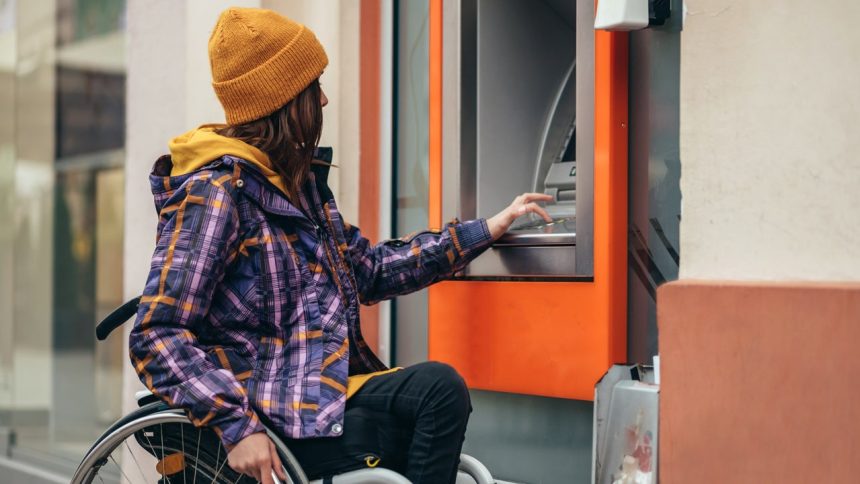Key takeaways
- A cash advance can be an option when you need money in a pinch, but it’ll cost you.
- You will start accruing interest on your cash advance immediately.
- To avoid interest piling up, take out only a small amount and pay more than the minimum each month.
When you’re short on funds but need money immediately, getting a cash advance from your credit card is a fast and convenient way to get the cash you need. It’s essentially a cash loan from your credit card, with a maximum amount equal to your available credit limit or your available cash advance limit. Unfortunately, a cash advance comes at a hefty cost.
Before you use your credit card for an advance, it is helpful to know the steps you can take to minimize the costs of a cash advance.
Why cash advances are expensive
Typically, you get a cash advance from an ATM or through a bank that works with your credit card’s payment network (Visa, Mastercard, American Express or Discover). When you take out a cash advance, the amount will be added to your balance and it will begin to accrue interest right off the bat.
While getting a cash advance is easy, it’s also quite expensive. Consider these factors which drive up the cost of a cash advance:
Transaction fees
No matter how you take out a cash advance, you will have to pay a transaction fee, typically 3 percent to 5 percent. Currently, the transaction fee for Chase Sapphire Preferred® Card is 5 percent or $10, whichever is higher. That means if you take out a cash advance for $300, the transaction fee will run you $15. Incidentally, the transaction fee is identical for three other top credit cards:
To find your card’s exact fees for cash advances, call your issuer or review the terms and conditions found in the Schumer Box.
Higher APR
The APR for credit card cash advances tends to be substantially higher than the APR for regular purchases.
Consider this: the current average credit card interest rate is hovering around 20 percent. While your card’s APR for regular purchases may be higher or lower, the cash advance APR could be considerably higher, at closer to 30 percent.
Before you get a cash advance, run the numbers to understand your actual cost.
No grace period
Many responsible cardholders are surprised to learn that credit card companies do not offer a grace period for cash advances as they do for most regular purchases. Instead, interest begins to mount the moment you take a cash advance.
How to minimize the cost of a credit card cash advance
A cash advance may be helpful in an emergency, but you can’t borrow above your credit line, and credit card companies typically limit your daily cash advance amount to a few hundred dollars.
However, you still may want to consider a cash advance as a last-resort option despite the transaction fees and high-interest rates. In that case, it’s helpful to understand how to limit the costs of a cash advance.
Borrow as little as possible
Ideally, to minimize cash advance costs you should consider borrowing only the absolute minimum you need. The smaller your cash advance amount, the less you’ll have to pay in fees and interest. Remember, a cash advance is simply a loan from a bank. The best way to limit costs is to avoid taking out a considerable amount, if possible.
Pay off your cash advance as fast as you can
Since your advance begins accruing interest the same day you get your cash, start repaying the amount you borrow as soon as possible.
If you take out a $200 cash advance, aim to pay that amount in full — or as much as possible — on top of your minimum payment. Make it a goal to repay the amount in days instead of weeks. And try not to let the advance accrue interest for months. At 30 percent APR, a $1,000 cash advance will accrue interest of about 82 cents a day. If you can pay it off within a few weeks, the interest won’t have time to add up too much. But as time goes on, so will the mounting interest.
Your credit card statement should show you the different interest rates for your purchases, cash advances and balance transfers. Thankfully, the Credit CARD Act of 2009 requires credit card companies to apply payments made in excess of the minimum amount due to balances with the highest interest rates. Before the passing of this important consumer protection legislation, it had been common practice to apply payments over the minimum monthly amount to the lowest interest balances first, thereby extending the time necessary to repay higher interest rate balances.
How much can a cash advance cost?
You can use Bankrate’s credit card calculator to see the total cost of a cash advance, as well as how different repayment strategies can change how much you’ll have to pay.
Let’s say you take out a $500 cash advance at 30 percent APR and make a minimum payment of $17.50 each month. You’d pay that amount for 67 months (more than five years!) before the balance was paid in full. You would also pay $510.95 in interest, plus a $25 cash advance fee (5 percent) and possibly an ATM fee, likely $3 or more. So, in order to borrow $500, you would end up paying an additional $538.95.
That means the convenience of a cash advance would cost you more than the original borrowed amount of $500 if you only pay the minimum payment. Doubling your monthly payment to $35 would have you paying off your debt in 18 months with $126.31 in total interest (about 25 percent more than the amount borrowed), while tripling it to $52.50 a month would take just 12 months and you’d only pay an additional $78.18 in interest (about 16 percent more).
This example highlights the importance of paying more than the minimum amount in order to minimize the cost of a cash advance. You can significantly reduce interest charges and your repayment timeline if you can make sizable payments over the minimum amount. If you are unable to pay more than the minimum, it may be best to save your money and avoid getting a cash advance.
Alternatives to a credit card cash advance
Since a cash advance can be costly, consider these options instead to meet your financial needs and save money.
Request an extension
Instead of getting a cash advance to pay a bill, you may be able to get your creditor to extend or change your due date. You may even be able to work out a payment plan to catch up on your account without affecting your credit. Many creditors even allow their customers to pause their accounts for an agreed number of weeks or months due to financial hardship.
It doesn’t hurt to talk to your creditors to discuss your options. You may just gain the flexibility you need to address an unplanned expense or emergency.
Friends and family
While borrowing money from a friend or family member can be a more flexible and less expensive option, this arrangement also carries the potential to damage your relationship with the person who agrees to loan you money. If you pursue this path, make sure you and the other person set clear terms before you accept any money.
Personal loan
Unless you have good credit, a personal loan could be an expensive option with high interest rates. Still, the interest rates and terms are typically much more favorable than a cash advance.
Zero percent interest cards
Another option to consider is applying for a new card that offers introductory 0 percent interest on either new purchases or balance transfers for a specific timeframe, typically from 12 to 21 months depending on the card. With a 0 percent interest card, you can avoid interest charges and work on paying the balance off before the introductory period ends. However, once the offer timeframe ends, you will start accruing interest on any remaining balance.
The bottom line
A cash advance should be a last resort because of its high interest, transaction fees and other factors. Consider other alternatives such as asking for an extension, getting a personal loan or seeking assistance from a friend or family member.
If you have few options and your best bet is to get a cash advance, you can minimize the financial impact by only withdrawing a small amount and repaying the balance as quickly as possible.
Read the full article here
















